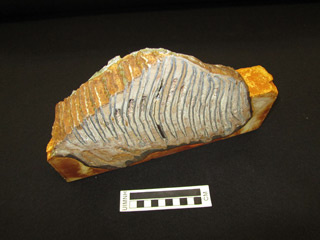Two mammoths discovered at a southern Iowa dig site belong to different species, one of which is the well-known woolly mammoth, a University of Iowa-led research team announced on Friday.

The identification of a woolly mammoth comes from the team’s latest find, made last month, of skull fragments and two teeth. Woolly mammoths usually prefer colder climes and wide expanses but there were exceptions, as it appears in this case, says Chris Widga of the Illinois State Museum, who is examining the distribution of mammoths across the Midwest and is consulting on the Iowa dig.
“In recent years, we've come to the realization that woolly mammoths were not necessarily the open-land, tundra dwellers we always thought they were,” Widga says. “Rather than following tundra habitat to the north as the glaciers receded, many mammoths stayed put in the Midwest, eventually going extinct as local populations.”
Woolly mammoths are popularly known thanks to the “Ice Age” movie series, their long tusks, and their iconic linkage to the last glacial period in North America and Eurasia, when these huge beasts roamed the frozen plains. Their Columbian brethren are less well-known even though these animals were larger (measuring 14 feet at the shoulder compared to 11 feet for woolly mammoths) and had long, spiralled tusks. Both species largely died out when the Ice Age ended roughly 11,000 years ago, due primarily to a rapidly changed climate and hunting by humans.
To the untrained eye, woolly and Columbian mammoth teeth look indistinguishable. But to an expert, the species can easily be separated by tooth characteristics such as plate count and density as well as tooth size.
The discovery of separate species at the same site has raised a host of questions, including whether the species lived together, at the same time, or years apart. Horgen and her team hope that further analysis of the teeth samples and bones will shed more light on the creatures and their circumstances. “The wonderful preservation of bones and other biological remains at the site such as plants and invertebrates could offer a detailed snapshot of the landscape this mammoth lived in before it died—and may even offer clues to how and why they went extinct,” Horgen says.
The dig began in April, about three years after a local farmer stumbled upon what looked to be a massive bone sticking out of an eroded riverbank. What he discovered was an approximately 4-foot-long femur that belonged to a mammoth that called Iowa home at least 10,000 years ago. The farmer, who does not want his name publicized nor the location of the dig to be identified, approached the UI Museum of Natural History to help excavate the area and was pleased to gain the expertise of UI scientists in exchange for the chance to do research on the specimen and analysis of the environment in which the animal lived.
The team will return to the site on Saturday to expand the excavation and recover more bones found earlier in the week. To date, at least 70 bones have been found.
The UI-led excavation has involved partnerships with various institutions and local organizations, including William Penn University in Oskaloosa, Iowa State University, the Office of the State Archaeologist, and the Cedar Valley Rock and Mineral Society. High school teachers, students, and residents also have participated in the dig.